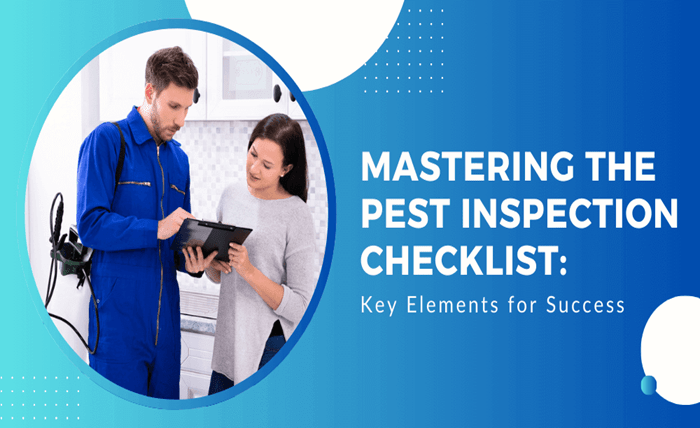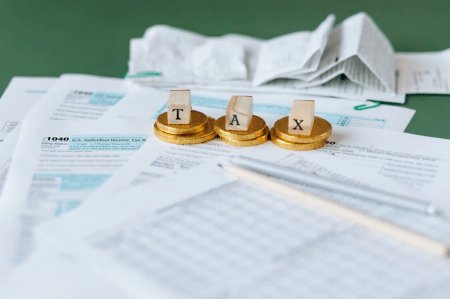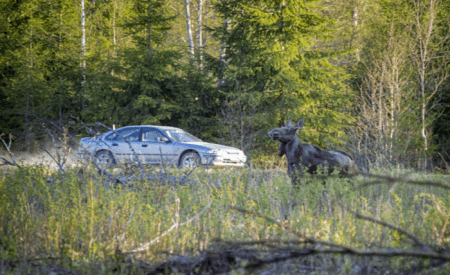Can you believe that a simple “list” could be your ultimate weapon against the tiny invaders of your space? It’s true. A thorough pest inspection is crucial for maintaining a pest-free environment and enhancing property management. Understanding the essential elements of a successful pest inspection checklist can significantly improve the effectiveness of pest control measures by systematically addressing every potential risk.
Let’s examine the critical elements of a successful pest inspection checklist:
Identification of Common Pests
Pinpointing exact pests specific to an area is pivotal in controlling infestations. Recognizing the signs of pests during a thorough inspection is an indispensable part of a pest inspection checklist. The following are the crucial indicators:
- Termites: Detect their presence by:
- Damaged wood appears hollowed or carved out.
- Mud tubes on exterior walls signifying travel paths.
- Rodents: Identify rodent infestations through the following:
- Droppings located along walls or near food sources.
- Marks of gnawing, especially on wires and wooden structures.
- Insects: Spot an insect occupation by observing the following indicators:
- Dead bugs or wings, particularly near windows or in cobwebs.
- Egg cases and larval stages in secluded areas.
Indeed, linking these signs to potential entry points and habitats within a property can lead to targeted and successful pest mitigation.
Assessment of Risk Areas
Identifying areas vulnerable to pest infestations is a cornerstone of effective pest management, crucially outlined in any pest inspection checklist. Recognizing these zones allows for timely interventions. These key areas include the following:
- Damp areas: High-risk for attracting pests include the following:
- Areas on bathrooms, basements, and the under-sink regions where moisture accumulates.
- Regularly inspect for leaks and rectify any moisture issues to deter pest attraction.
- Dark corners: Favorable hiding spots for pests; watch for the following:
- Evidence of nests or droppings in isolated, shadowy places.
- Use flashlights during inspections to ensure thorough visibility and pest detection.
- Places with abundant food sources: Often besieged by pests, focus on the following areas:
- Kitchen areas, where crumbs and food spills are more frequent.
- Garbage disposal areas, ensuring they are clean and tightly sealed.
- Implement strict sanitation protocols and secure food storage practices to minimize pest access.
Tools and Equipment Needed
A comprehensive pest inspection hinges on using specific tools and equipment to ensure thoroughness and efficiency. Essential for every pest inspection checklist, the following items are indispensable:
- Flashlights: Use flashlights to illuminate dark, hard-to-reach areas where pests may hide, such as basements, attics, and wall cavities.
- Ladders: Access high places, including roofs, gutters, and upper wall sections, crucial for detecting signs of aerial or roof-entering pests.
- Protective clothing: Ensures safety during inspections, particularly in areas that may pose hazards, such as those treated with chemicals or inhabited by wildlife. Consider the following:
- Gloves: Protect hands when moving objects or clearing debris.
- Overalls: Shield the body against dirt and potential irritants.
- Screwdrivers or probes: These aid in examining wooden structures for signs of termites, rot, or other pest damage.
- Magnifying glass: This aids in detecting tiny pests or eggs that are otherwise invisible to the naked eye and verifies the nature of the infestation.
Documentation and Reporting
Accurate documentation is pivotal in inspecting and preserving a historical record of pest activity and guiding future interventions. These records, including a robust pest inspection checklist, are the backbone of any pest control program. Additionally, creating impactful reports requires a clear strategy, which includes:
- Consistency and detail: Ensure each report follows a standard format, leveraging the pest inspection checklist for thoroughness.
- Analytical insights: It offers a critical data analysis, highlighting patterns and risks.
- Clear recommendations: Provide specific, actionable steps for remediation and prevention, steering future pest control efforts.
By adhering to these principles, reports can become powerful tools for strategic decision-making in pest management.
Follow-Up Actions and Recommendations
After the inspection, taking decisive steps is critical to manage pest issues effectively. Based on Ohio’s pest inspection checklist, several actions ensure lasting results and property safety. Consider implementing the following:
- Scheduling treatments: Arrange for professional pest control treatments based on the identified infestations to ensure timely intervention and prevent the spread of pests.
- Sealing entry points: Identify and seal all potential entry points found during the inspection to prevent new pests from entering the premises.
- Implementing preventive measures: Establish routines such as proper waste management and regular cleaning schedules to minimize future pest attraction and infestation risks.
Moreover, following professional recommendations meticulously paves the way for sustained pest control and safeguards the property against future threats.
Pest-Proofing Perfection
Conclusively, the success of any pest management strategy relies heavily on a comprehensive pest inspection checklist. Such a checklist is crucial for identifying and addressing pest issues effectively. Property owners and managers should embrace this tool to ensure thorough and consistent inspections.
Moreover, it’s vital to regularly update and refine your pest inspection checklist, aligning it with the latest industry standards and insights. Doing so, you can maintain the upper hand in pest control, safeguarding your property with the most current and efficient practices.







